-
Spring Planting
Order now for best selections.
-
Fall Planting
Available for preorder for fall 2025 delivery.
-
Bulk Flower Bulbs
Big savings on bulk orders!
- New
-
Gardening Resources
Flower Bulbs & Perennials at Wholesale Prices
Landscaping with Bulbs: Where to Plant Flower Bulbs
K. van Bourgondien serves the entire spectrum of home gardeners and landscapers, from first-time growers to experienced pros. All of them would benefit by planning out precisely where to plant flower bulbs before they go into the ground. We recommend putting together a plan on your computer or sketching out details on graph paper before purchasing your bulbs. This will help ensure that the correct number of bulbs are obtained for your foundation planting, border planting, flower bed or other area of your green space. Because the foliage of spring-blooming bulbs dies by early summer, knowing exactly where the bulbs are planted will come in very handy in case annuals or perennials are added later to the area. By doing a bit of bloom-time planning, your bulbs will provide a nonstop display of color from early spring into summer!
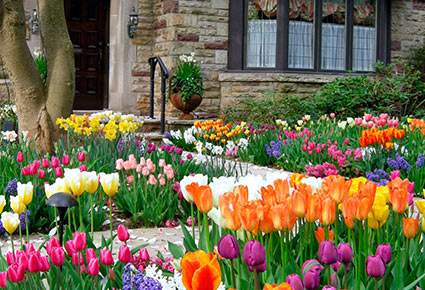
Foundation Planting
Plant bulbs in a grouping of twelve or more to add color in the early spring to a foundation planting, such as an evergreen shrub or nonflowering perennials. Pay attention to the foliage color of annuals and perennials, as those greens, browns, and whites serve as the backdrop for your bulbs.
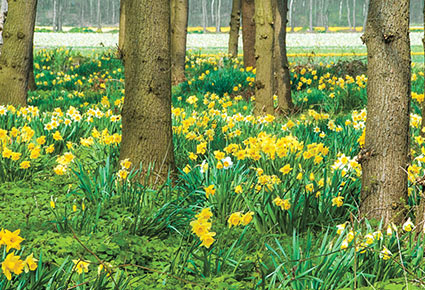
Deciduous Shrubs and Trees
Spring-flowering bulbs can be planted under deciduous shrubs or small trees in the landscape. These early bloomers receive plenty of light, as they start growing long before deciduous trees and shrubs develop full leaves. However, don't plant spring bulbs under evergreen shrubs—the thick foliage will not provide them enough sunlight.
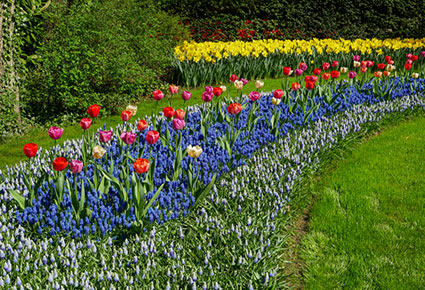
Border Planting
A border of low growing bulbs planted around the edge of a vegetable garden, flower bed, or the edge of a small lawn adds visual interest to these areas. Borders can help with transitions from gardens to paths, or to separate sections of your garden.
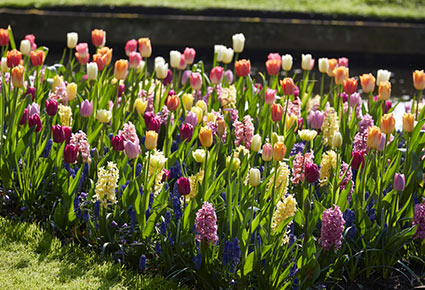
Perennial Beds & Rock Gardens
Spring bulbs can be designed into a perennial bed or border to perk up the spot in the spring. Select bulbs that bloom in March, April, or May, before perennials start to flower. Then, locate the bulbs in the flower bed so that the dying foliage will be hidden when the perennials start to come in.
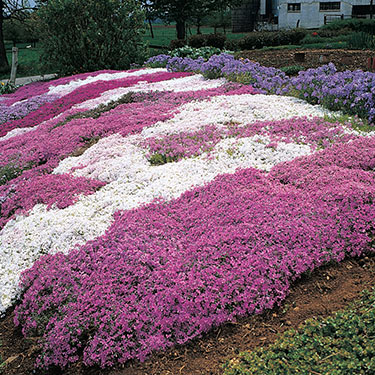
Ground Cover
Some bulbs can be planted with low growing ground covers. Ground cover plants can help prevent weeds, retain ground moisture, and slow erosion. Keep the height relationship between the ground cover and the bulb flower in mind when selecting your ground cover plant. As a general rule, the ground cover should be no more than half the height of the bulb flower.
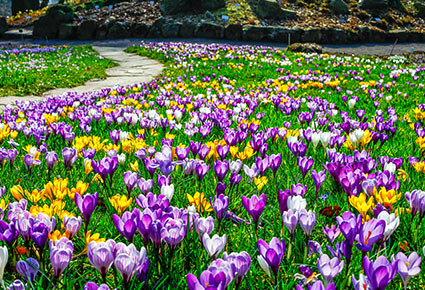
Lawn Area
Do you have green as far as the eye can see? Sunny corners of the lawn can be great place to develop a new flower bed: think small shrubs and perennials, plus one or two groupings of spring bulbs of one color to provide a point of focus during the spring months. Including flowers can help improve the quality of soil in your yard, reduce erosion, and attract pollinators to your yard.
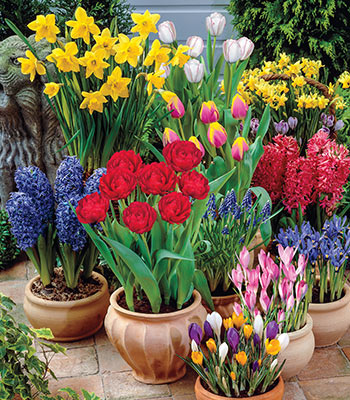
Containers
Both spring bulbs and summer bulbs can be planted in portable containers. In containers, spring bulbs can be moved to a location out of sight while the foliage matures, once the bloom time is past. Summer bulbs in containers are a great way to add color to a patio or deck all summer long. Pay attention to the light requirements of the bulbs and be sure the container has drainage holes so your bulbs don't "drown" or become rotted.
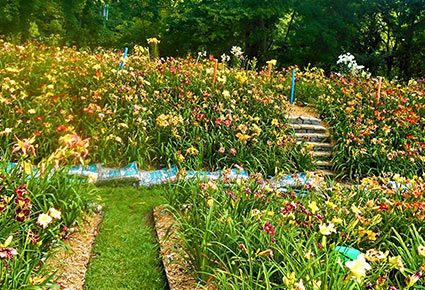
Steep Slopes
Steep slopes in the landscape are difficult to mow and maintain. Many gardeners use spring bulbs on these steep slopes to add early spring color to the landscape with little work. Try daylilies—they have fibrous root systems that will hold well even in runoff on a sloped surface.
| Shop All Flower Bulbs |
| See More Tips |
Have another question? Return to the Customer Service Help page or send an e-mail directly to Customer Service
Copyright © 2025 Gardens Alive!, Inc. d/b/a Dutchbulbs.com. All Rights Reserved. Dutchbulbs.com trademarks are registered trademarks of Gardens Alive!, Inc.
This site is protected by reCAPTCHA and Google Privacy Policy and Terms apply.
This site is protected by reCAPTCHA and Google Privacy Policy and Terms apply.

Item added to cart





